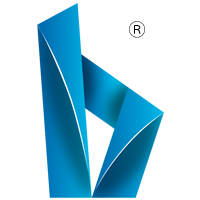For Government Institutions:
- An information database of functions and responsibilities of state bodies and national companies
- Creation of a spatial model of an entire structure of a public system for citizens. A Digital Government
- A suite of tools and programs that support citizens and enhance information policy and advocacy efforts
- Audit, monitor, and coordinate of state programs and strategic initiatives
- Personnel accounting.
- Financial monitoring and implementation of savings programs
- The implementation of the meritocracy principles
- Anti-corruption fight
- Modeling of merging, acquisition, and splitting up processes
- International politics. Interaction with State systems of Foreign States
- A tool for parliamentarians’ participation in public administration
- Creation of Situational Information-Analytic Centers
In summary, an open and transparent Government. More harmonious relations between a Citizen and a Government/State. This approach aims to reduce the risk of public dissent and dissatisfaction with government performance while enhancing societal understanding of the effectiveness of the state apparatus. It will provide tools for making informed management decisions based on strategic data access. The implementation of innovative tools and management methods promises a significant increase in efficiency and speed within the government structure. Moreover, it will consolidate the organizational, intellectual, and creative resources of various divisions, ensuring instant access to statistical data on public resource distribution and leading to substantial savings in financial and human resources.
For International Organizations and Unions:
- Developing of spatial model of the state systems for all member countries within the integration association
- Establishing of cohesive digital environment that encompasses all member states
- Facilitating the exchange of best practices
- Monitoring the “horizontal interactions” of structures sharing similar work profiles
- Tracking the quantity and quality of joint projects, agreements, and international treaties associated with each interaction
- Providing immediate access to information regarding representatives responsible for integration processes
- Creation of Situational Information-Analytic Centers
Overall, significant strengthening of integration processes among States.
For Multinational Companies, Holdings, and Consortiums:
- Establishing an information database that tracks the performance of each division within the organization.
- Implementing comprehensive personnel accounting and human resources policies that embrace the principles of meritocracy.
- Strengthening corporate governance tools to improve oversight and accountability.
- Audit, monitor, and coordinate the execution of strategic initiatives and development programs.
- Enhancing financial monitoring practices and implement effective savings programs.
- Modeling the processes related to mergers, acquisitions, and the restructuring of companies and divisions.
- Creation of Situational Information-Analytic Centers
In summary, a powerful competitive advantage, serving as tools for making informed management decisions based on access to strategic data. By introducing innovative tools and management methods, organizations can achieve a significant increase in efficiency and operational speed. Furthermore, this approach consolidates organizational, intellectual, and creative resources, allowing for instant access to statistical data regarding resource allocation, task assignments for each division, and actual outcomes of their operational activities.
For Scientific Organizations and Universities:
- Implementing network visualization to represent the connections between pedagogical staff, student groups, and faculties
- Establishing certifications for teaching and student staff to enhance qualifications and standards
Overall, these innovations pave the way for a new realm of scientific research, marking a significant advancement in the evolution of management practices. This initiative introduces a novel tool and methodology for effective management within the educational and scientific sectors.
For Consulting Companies:
- Providing calculations for determining the valuation of the company
- Facilitating comprehensive strategic planning processes
- Evaluation both tangible and intangible assets across divisions
- Monitoring and analyzing financial flows within the organization
- Conducting assessments of human resources to optimize workforce effectiveness.
- Modeling processes related to mergers, acquisitions, and the restructuring of companies and divisions.
In summary, these offerings provide a competitive advantage, serving as a highly efficient tool for the rapid collection and processing of strategic information.
For Retail and Network Companies:
- Developing a spatial model of the network of branches and territorial units
- Creating a hierarchical visualization of sales representatives for improved oversight and coordination
- Implementing tools for monitoring sales performance in real-time
- Assessing the work efficiency of structural units and individual employees
In summary, a competitive advantage, offering a convenient, effective, and visually engaging approach to managing retail and network operations.
